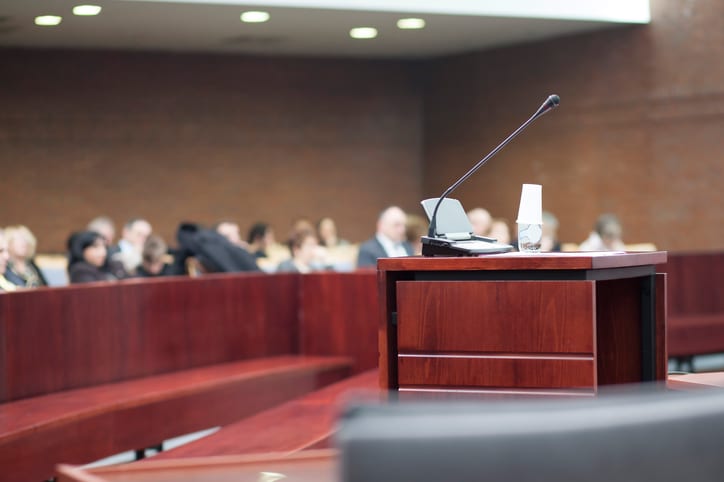Does the Equal Pay Act Apply to Charter School Salaries?
The Equal Pay Act is designed to make sure women receive equal pay for equal work. But income inequality continues to be a problem in workplaces across the country. In some cases, like in non-profit charter schools, teachers may not even know if they are covered. They may ask, “Does the Equal Pay Act apply to charter school salaries?”
In this blog post, I will review the recent complaint in Equal Employment Opportunity Commission vs. The Guidance Charter School, Case No. 2:18-cv-02323. I will explain the federal Equal Pay Act and California Fair Pay Act, which prevent gender discrimination in salaries and compensation. I will also examine whether those laws are affected when the employer is a charter school or other non-profit organization.
The Equal Pay Act Makes Gender-Based Wage Discrimination Illegal
The Equal Pay Act of 1963 and Title VII of the Civil Rights Act of 1964 work together to prevent gender discrimination at work, and on paychecks nationwide. Title VII makes it illegal to make employment decisions, including setting salaries, wages, raises, bonuses, and other compensation, based on an employee’s sex or gender. The Equal Pay Act makes it easier for employees to prove wage discrimination. It says discrimination happens whenever an employer pays wages at a lower rate than it pays to employees of the opposite sex doing equal work. Differences in pay must be based on a gender-neutral:
- Seniority system
- Merit system
- Quantity or quality of production system
- Differential system
When wage discrimination is found, the company is not allowed to solve it by reducing the wage of other employees.
Some states have even tighter gender discrimination laws. For example, the California Fair Pay Act, which took effect January 1, 2016, tightened existing equal pay laws by removing the requirement that the comparative employee work in the same establishment and changing “equal work” to “substantially similar work”. This allows employees to sue even if they are working at different locations for the same employer, or their job titles do not precisely match the comparative employee.
EEOC Says Provisions of the Equal Pay Act Apply to Charter School Salaries
The Equal Pay Act applies to public and private employees alike. Whether a person works for a government entity or a private company, he or she can still file a complaint with the Equal Employment Opportunity Commission (EEOC) for wage discrimination. If the EEOC finds a violation of the Equal Pay Act, it will attempt to negotiate with the employer and then either file suit or give the employee a “right to sue” letter. This notice of right to sue allows a worker to hire a private wage discrimination attorney and take the matter to federal court.
Recently, the EEOC took up the case of a charter school employee. The EEOC sued the Guidance Charter School, of Palmdale, California, for violating the Equal Pay Act and Title VII gender discrimination laws. The complaint was filed in the U.S. District Court for the Central District of California (EEOC v. The GuidanceCharter School, Case No. 2:18-cv-02323). The complaint alleges that the charter school paid a female math tutor a lower hourly wage than her male coworker, even though their jobs were entirely interchangeable. The EEOC said the only difference was the employees’ gender. When pre-litigation conciliation settlement failed, the EEOC filed a complaint in federal court seeking back pay and liquidated, compensatory, and punitive damages on behalf of the woman, and an injunction preventing the charter school from discriminating again in the future.
“Ensuring that women receive equal pay for equal work is one of the EEOC’s strategic enforcement priorities,” said Anna Park, regional attorney for the EEOC’s Los Angeles District. “There is no excuse for employers underpaying someone simply because of her gender.”
Non-Profit Status Does Not Affect Equal Pay Requirements
The question of whether the federal or state gender discrimination laws and the Equal Pay Act apply to charter school salaries most often comes from the schools’ non-profit status. Non-profit organizations historically pay their employees less than the same jobs in the private or government sectors. But that does not justify wage discrimination within the organization. Non-profit organizations, like charter schools, may not balance their budget unequally on the backs of their female employees. When they do, as with the Guidance Charter School, the EEOC and private gender discrimination attorneys can hold non-profits accountable under state and federal law.
At Eisenberg & Baum, LLP, our gender discrimination attorneys can help you end wage discrimination within your non-profit organization. We will work with the EEOC or file a complaint for you after you receive a “right to sue” letter, ensuring that you get equal pay for equal work. If you believe that you are being paid less than your counterparts because of your gender, contact Eisenberg & Baum, LLP, today to schedule a free consultation.







